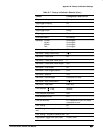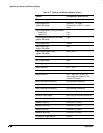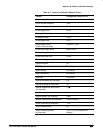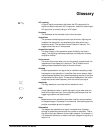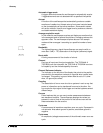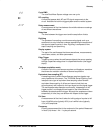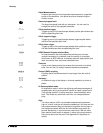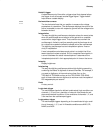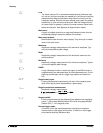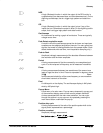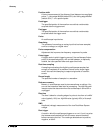
Glossary
Glossary
Gated Measurements
A feature that lets you limit automated measurements to a specified
portion of the waveform. You define the area of interest using the
vertical cursors.
General purpose knob
The large front-panel knob with an indentation. You can use it to
change the value of the assigned parameter.
Glitch positive trigger
Triggering occurs if the oscilloscope detects positive spike widths less
than the specified glitch time.
Glitch negative trigger
Triggering occurs if the oscilloscope detects negative spike widths
less than the specified glitch time.
Glitch either trigger
Triggering occurs if the oscilloscope detects either positive or nega-
tive spike widths less than the specified glitch time.
GPIB (General Purpose Interface Bus)
An interconnection bus and protocol that allows you to connect
multiple instruments in a network under the control of a controller.
Also known as IEEE 488 bus. It transfers data with eight parallel data
lines, five control lines, and three handshake lines.
Graticule
A grid on the display screen that creates the horizontal and vertical
axes. You can use it to visually measure waveform parameters.
Ground (GND) coupling
Coupling option that disconnects the input signal from the vertical
system.
Hardcopy
An electronic copy of the display in a format useable by a printer or
plotter.
Hi Res acquisition mode
An acquisition mode in which the digitizing oscilloscope averages all
samples taken during an acquisition interval to create a record point.
That average results in a higher-resolution, lower-bandwidth wave-
form. That mode only works with real-time, non-interpolated sam-
pling.
High
The value used as 100% in automated measurements (whenever
high ref, mid ref, and low ref values are needed as in fall time and rise
time measurements). May be calculated using either the min/max or
the histogram method. With the min/max method (most useful for
general waveforms), it is the maximum value found. With the histo-
gram method (most useful for pulses), it refers to the most common
value found above the mid point. See
Appendix B: Algorithms
for
details.



